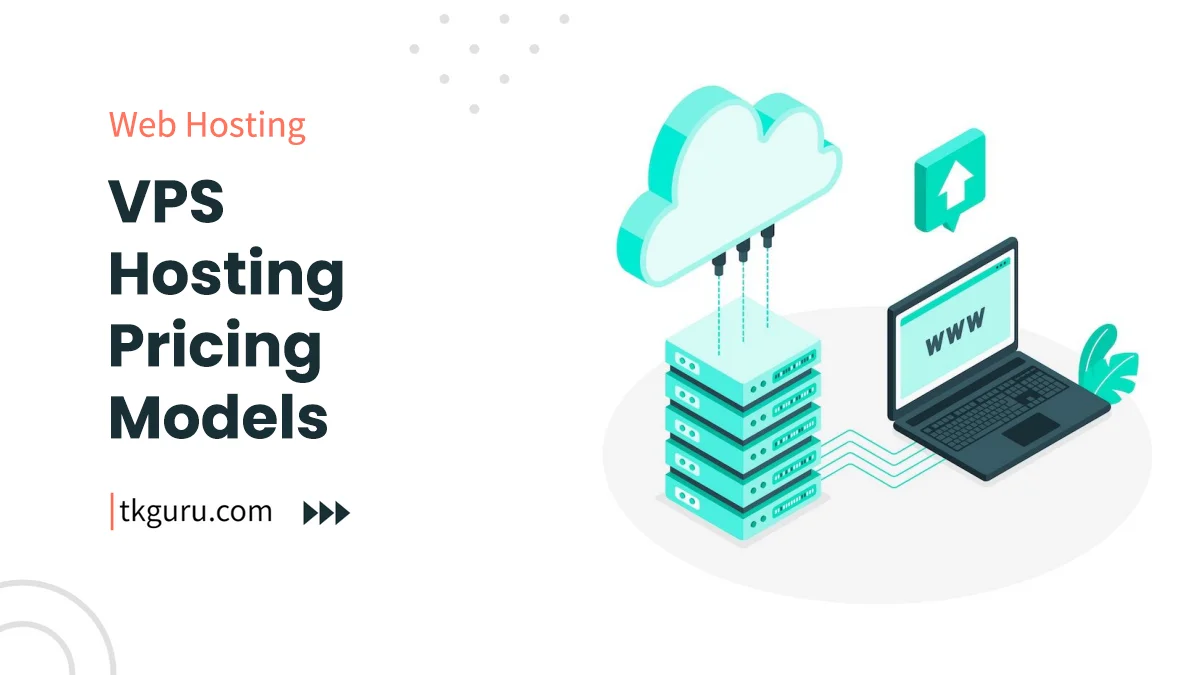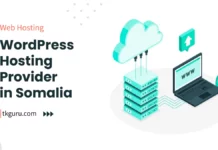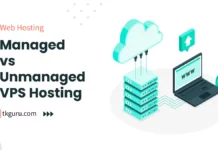Advertisements
Ratings

VPS Hosting Pricing Models – In the world of VPS hosting, choosing the right pricing model is a critical decision that can greatly impact your website’s performance, scalability, and budget.
With various pricing models available, understanding the nuances of each and aligning them with your business needs is essential to ensure you get the best value for your money.
In this article, we’ll delve into the different VPS hosting pricing models and guide you on how to make an informed decision.
Section 1: Understanding VPS Hosting Pricing Models: When exploring VPS hosting plans, you’ll encounter different pricing models tailored to cater to various business requirements. These models include:
- Pay-as-You-Go Pricing: This model allows you to pay for the resources you use, with the flexibility to scale up or down as needed. It’s ideal for businesses with varying resource requirements.
- Fixed Plans Pricing: Fixed plans offer predetermined resource allocations for a set price. They provide predictability and are suitable for businesses with stable resource needs.
- Tiered Plans Pricing: Tiered plans come with multiple resource tiers, allowing you to choose a package that aligns with your requirements. They are well-suited for businesses anticipating growth.
Section 2: Pay-as-You-Go Pricing: The pay-as-you-go model offers flexibility and cost-effectiveness by charging you only for the resources you consume. This is advantageous for:
- Scalability: You can easily adjust resources to handle traffic spikes or increased demand.
- Startups: Businesses with uncertain resource needs can avoid overpaying.
- Seasonal Demand: Websites experiencing seasonal variations benefit from scaling resources as needed.
However, it’s essential to monitor usage closely to avoid unexpected costs during high-traffic periods.
Section 3: Fixed Plans Pricing: Fixed plans provide a stable resource allocation for a set price. This model suits:
- Predictable Usage: Businesses with consistent traffic levels benefit from cost predictability.
- Budget Control: Fixed plans prevent unexpected surges in hosting expenses.
- App Development: Stable resource allocation simplifies app testing and development.
While offering stability, fixed plans might not be as flexible when dealing with unexpected traffic spikes.
Section 4: Tiered Plans Pricing: Tiered plans accommodate a range of resource needs through different packages. This model caters to:
- Growing Businesses: As your website or app gains traction, you can easily upgrade to higher tiers.
- Resource Scaling: Tiered plans offer scalability while maintaining cost predictability.
- Customization: Different tiers suit specific requirements, providing a tailored solution.
However, it’s crucial to choose the right tier that aligns with your current and anticipated needs to avoid overpaying.
Section 5: Resource Scalability and Performance: The scalability of your VPS hosting resources is a vital factor to consider when choosing a pricing model.
Pay-as-you-go and tiered plans excel in offering resource scalability, enabling you to adapt to changing demands seamlessly.
Fixed plans provide stability but might require upgrading or downgrading if your needs change significantly.
Section 6: Evaluating Additional Costs: When assessing VPS hosting pricing, it’s crucial to factor in potential additional costs. These can include:
- Add-Ons: Some features, such as enhanced security or backups, might come at an extra cost.
- Backups: While some providers offer free backups, others charge for this service.
- Support: Premium support might require an additional fee.
- Data Transfer: High data transfer can incur extra charges.
Section 7: Aligning Pricing with Business Needs: To choose the best pricing model, assess your business’s current and future resource requirements. Consider the following:
- Resource Needs: Evaluate your website’s traffic patterns and anticipated growth.
- App Development: If you’re developing apps, a fixed plan might provide stability.
- Budget: Align your budget with the pricing model that offers the most value for your money.
Section 8: Cost-Effectiveness and Value: When evaluating pricing models, don’t just focus on the cost. Consider the overall value each model brings to your business:
- Performance: Choose a model that offers optimal performance for your budget.
- Support: Quality customer support can save time and resources in the long run.
- Features: Evaluate included features, such as backups and security tools.
Section 9: Case Studies: Real-World Examples: Let’s take a look at a few case studies to illustrate how different businesses benefited from specific pricing models:
Case Study 1: Startup Scaling
Business: A rapidly growing e-commerce startup that has experienced sudden surges in website traffic due to successful marketing campaigns.
Chosen Pricing Model: Tiered Plans Pricing
Scenario: The startup’s website faced sudden spikes in traffic during promotional events, which strained their hosting resources.
They needed a solution that could handle these spikes while still being cost-effective during quieter periods.
Solution: The startup opted for a tiered pricing plan, allowing them to choose a package with sufficient resources for normal operations while having the flexibility to upgrade to a higher tier during peak periods.
This approach not only accommodated their current needs but also anticipated future growth.
Benefits:
- Efficient Resource Allocation: The tiered plan provided ample resources for regular traffic, ensuring a seamless user experience.
- Cost-Effective Scaling: During promotional events, the startup could easily switch to a higher tier to handle increased traffic, ensuring optimal performance without overspending.
- Future-Proofing: The scalability of the tiered model aligned with the startup’s projections for continued growth.
Case Study 2: App Development
Business: A software development company specializing in mobile app creation for clients.
Chosen Pricing Model: Fixed Plans Pricing
Scenario: The company needed a stable hosting environment for testing and development of their clients’ mobile apps. Consistency and reliability were paramount to ensure accurate testing results.
Solution: By selecting a fixed pricing plan, the company secured a predetermined allocation of resources. This enabled them to establish a controlled testing environment and maintain stable performance for ongoing app development.
Benefits:
- Stable Environment: Fixed resource allocation ensured consistent performance during app testing phases.
- Budget Control: Predictable monthly costs allowed the company to allocate resources efficiently within their budget.
- Streamlined Development: Reliable hosting supported focused app development without worrying about resource fluctuations.
Case Study 3: E-commerce Site with Seasonal Peaks
Business:An online retailer specializing in holiday-themed merchandise.
Chosen Pricing Model: Pay-as-You-Go Pricing
Scenario: The e-commerce website experienced significant fluctuations in traffic due to the seasonal nature of its merchandise. They needed a hosting solution that could handle high traffic during peak seasons while avoiding unnecessary expenses during off-peak times.
Solution: The retailer adopted a pay-as-you-go pricing model, allowing them to scale resources during holiday seasons to accommodate increased traffic. During quieter times, they could scale down to save costs without sacrificing performance.
Benefits:
- Flexible Scalability: Pay-as-you-go enabled seamless resource scaling to meet holiday shopping demands.
- Cost Efficiency: Resource allocation during off-peak times was adjusted to reduce unnecessary expenses.
- Performance and User Experience: The retailer could ensure consistent performance regardless of traffic variations.
Note: These case studies provide practical examples of how different businesses leveraged specific VPS hosting pricing models to address their unique needs and challenges.
By understanding these scenarios, readers can gain insights into how each pricing model can align with their own business requirements.
Section 10: Making the Right Choice: Factors to Consider: Choosing the optimal pricing model involves evaluating several factors:
- Scalability: Assess your need for resource scalability and how each model caters to it.
- Budget: Determine how much you’re willing to spend and which model fits your financial constraints.
- Long-Term Goals: Consider your business’s growth projections and how well each model accommodates them.
Contents
VPS Hosting Pricing Models offered by Providers
Here’s a detailed breakdown of the VPS hosting pricing models offered by each of the mentioned providers:
Cloudways: Cloud ways offers a unique pay-as-you-go pricing model that combines the flexibility of cloud infrastructure with ease of use.
With Cloud ways, you can choose from multiple cloud providers such as AWS, Google Cloud, and Digital Ocean, each with its pricing structure.
The pay-as-you-go model allows you to scale resources up or down as needed, ensuring you pay only for what you use.
DigitalOcean: Digital Ocean offers transparent pricing with fixed plans that cater to various resource requirements.
Their plans include Standard, General Purpose, CPU-Optimized, and Memory-Optimized plans.
Each plan comes with a fixed allocation of resources and a clear breakdown of the cost. This model is suitable for businesses seeking predictable costs and resource allocation.
Hostinger: Hostinger’s VPS hosting plans follow a tiered pricing model. They offer multiple plans with varying levels of resources, catering to different business needs.
The tiered model ensures that you can choose a plan that aligns with your budget and resource requirements. It’s an ideal choice for businesses anticipating growth and scalability.
A2 Hosting: A2 Hosting provides a similar tiered pricing approach, with different plans optimized for varying resource needs.
Their plans include Unmanaged VPS, Managed VPS, and Core VPS. This model allows businesses to select a plan based on their current requirements while having the option to upgrade as they grow.
SiteGround: SiteGround’s cloud hosting plans also adopt a tiered pricing structure. Their Entry, Business, and Business Plus plans offer increasing levels of resources and features.
This model suits businesses that require a reliable and scalable solution without the complexity of pay-as-you-go models.
Bluehost: Bluehost’s VPS hosting plans provide a combination of fixed plans and scalability. They offer Standard, Enhanced, and Ultimate plans, each with fixed allocations of resources.
However, Bluehost also allows you to add more resources if needed, enabling a level of scalability within the context of fixed plans.
HostGator: HostGator’s VPS hosting plans come in three levels: Snappy 2000, Snappy 4000, and Snappy 8000. These plans offer varying levels of resources, making them suitable for businesses with different resource requirements.
While the plans themselves are fixed, HostGator allows for easy upgrading if your needs change.
DreamHost: DreamHost offers a scalable pricing model with their Managed VPS hosting plans.
While they have fixed plans, they allow you to add RAM and storage on-demand, providing a level of scalability within the framework of fixed plans. This model suits businesses seeking both stability and adaptability.
GoDaddy: GoDaddy’s VPS hosting plans follow a tiered pricing model, ranging from Economy to Ultimate plans.
Each plan offers a fixed set of resources and features. GoDaddy’s model is suitable for businesses seeking a predictable cost structure with various levels of resource allocation.
Namecheap: Namecheap’s VPS hosting plans provide a range of fixed plans, each catering to different resource needs. Their Pulsar, Quasar, and Nebula plans offer varying levels of resources and features.
This model ensures cost predictability while accommodating businesses with different requirements.
The various VPS hosting pricing models offered by these providers cater to a wide range of business needs, from scalability and flexibility to stability and predictability.
By understanding the nuances of each model and assessing your business requirements, you can select the one that aligns best with your budget, resource needs, and growth projections.
It’s important to conduct thorough research and consider long-term implications when making your decision.
Comparison Table: VPS Hosting Pricing Models offered by Providers
Here’s a comparison table of the VPS hosting pricing models offered by the mentioned providers:
| Provider | Pricing Model | Key Features | Suitable for |
|---|---|---|---|
| Cloudways | Pay-as-You-Go | Resource scalability, multiple cloud providers | Businesses with variable needs |
| DigitalOcean | Fixed Plans | Transparent pricing, different plan options | Predictable resource needs |
| Hostinger | Tiered Pricing | Multiple plans, scalability, cost-effectiveness | Growing businesses |
| A2 Hosting | Tiered Pricing | Managed and unmanaged plans, scalability | Scalable resource allocation |
| SiteGround | Tiered Pricing | Reliable and scalable, multiple plan options | Stability and scalability |
| Bluehost | Fixed Plans with Scalability | Fixed plans, resource scalability | Resource flexibility |
| HostGator | Tiered Pricing | Multiple plan levels, easy upgrading | Varying resource requirements |
| DreamHost | Scalable within Fixed Plans | Managed plans, on-demand resource addition | Adaptability and stability |
| GoDaddy | Tiered Pricing | Multiple plan levels, resource allocation | Predictable cost structure |
| Namecheap | Fixed Plans | Different plan options, fixed resource allocation | Diverse resource requirements |
This comparison table provides an overview of the different pricing models offered by each provider, along with their key features and suitability for different business needs.
It can serve as a quick reference to help you make an informed decision based on your requirements.
Conclusion: Selecting the right VPS hosting pricing model is a pivotal decision that directly impacts your website’s performance, budget, and scalability.
By understanding the nuances of pay-as-you-go, fixed plans, and tiered plans, and aligning them with your business’s unique needs, you can ensure that you’re getting the best value for your money.
Remember, a well-chosen pricing model not only saves costs but also contributes to your website’s overall success.
VPS Hosting Pricing Models FAQs
What are the common pricing models for VPS hosting?
The common pricing models for VPS hosting are:
- Flat Rate: A fixed monthly or annual fee for a specific set of resources.
- Tiered Plans: Different plans with varying resources (CPU, RAM, storage) at different price points.
- Pay-as-You-Go: Pay based on actual resource usage, similar to a utility bill.
How do flat-rate VPS hosting plans work?
With flat-rate plans, you pay a fixed amount each month regardless of your resource usage.
You have a set allocation of resources (CPU, RAM, storage) that you can use within the plan's limitations.
What are tiered plans in VPS hosting?
Tiered plans offer multiple options with varying levels of resources.
For example, a hosting provider might offer basic, standard, and premium plans, each with increasing resources and features at corresponding price points.
How does pay-as-you-go pricing work in VPS hosting?
Pay-as-you-go pricing allows you to use resources based on your actual usage.
You're charged for CPU, RAM, storage, and data transfer in real-time, similar to how you pay for utilities. This model offers flexibility and cost control.
Which VPS hosting pricing model is right for me?
The right pricing model depends on your needs and preferences:
- Choose flat-rate plans for predictable resource usage and fixed budgets.
- Opt for tiered plans if you want scalability options based on your website's growth.
- Consider pay-as-you-go if you want flexibility and expect fluctuating resource demands.
Selecting the best VPS hosting pricing model depends on your website's requirements, budget, and growth projections.
Evaluate the different models offered by hosting providers to find the one that aligns with your needs.
| Web Hosting | Website |
| WordPress | Google Adsense |
| SEO | Affiliate Marketing |
| Blogging | YouTube |
Recent Posts
- 5 Best WordPress Hosting Provider in Somalia 2023
- 5 Best WordPress Hosting Provider in Austria 2023
- 5 Best WordPress Hosting Provider in Luxembourg 2023
- 5 Best WordPress Hosting Provider in Switzerland 2023
Related Tags
top vps hosting 2023, free vps trial 1 year, free vps server without credit card, free vps hosting forever, best vps hosting, free windows vps lifetime, free linux vps forever, best unmanaged vps hosting






